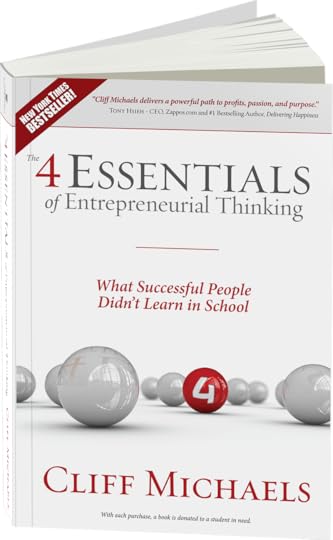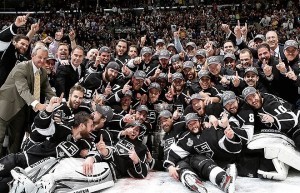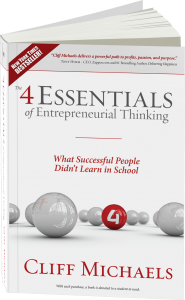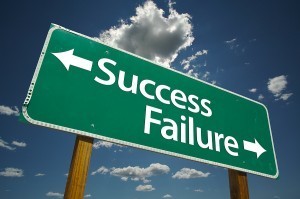Cliff Michaels's Blog, page 4
July 12, 2012
8 Pillars of Quality Relationships
 I once spoke to a group of 200 college students and asked their definition of “a relationship.” Rapid-fire answers bounced off the walls (friend, family, lover, client, mentor). Some responses included positive words like trusted, romantic, or profitable. Others were negative, such as destructive, codependent, or counterproductive.
I once spoke to a group of 200 college students and asked their definition of “a relationship.” Rapid-fire answers bounced off the walls (friend, family, lover, client, mentor). Some responses included positive words like trusted, romantic, or profitable. Others were negative, such as destructive, codependent, or counterproductive.
Equally insightful were questions like, “Which relationships are most important and how do we prioritize them? How many people can we rely on at 3:00 a.m.? And can they rely on us?”
Clearly, definitions vary. We were all influenced in a unique way by parents and siblings, peers and partners, clients and co-workers, and social or business experiences. Along the way, we learned that quality relationships take time and there are no short cuts. But there is a common thread to quality.
Over 20 years, I conducted surveys that included men and women (ages 16 to 95) in over 40 countries and 100 professions. The primary question on personal and professional relationships included: “What’s the Secret to a ‘Quality‘ Long-Term Relationship?” It never ceased to amaze me how similar the response was.
Here are the TOP 8 pillars of highly successful business partners, winning teams, and the happiest couples:
Fun & laughter
Mutual respect
Common values
Trust and loyalty
Selfless listening
Honest communication
Shared passion & purpose
Commitment and consistency
Consider the most important people in your life. Friends? Clients? The barista in a coffee shop perhaps? The partner in your office? The person you’re sharing a pillow with right now?
If your relationship needs a booster shot, double the dose of your 8 pillars. This is one magic elixir where excess is a good thing.
This blog is from a chapter section in…
The 4 Essentials of Entrepreneurial Thinking
Essential 2, Strategy 3 – Relationships & Networking
July 10, 2012
Unlocking the da Vinci Code – 4 Steps to Creative Thinking
 Are creative thinkers born or can anyone become an entrepreneurial soul?
Are creative thinkers born or can anyone become an entrepreneurial soul?
Leonardo da Vinci was perhaps the greatest creative mind of the Renaissance Age. But he had a success system that nourished a passion for work, play, and innovation that any of us can adopt. His principles have also been widely chronicled and practiced by individuals and corporations for centuries.
Although often known as a man of mystery (eloquently, if not fictionally dramatized in Dan Brown’s blockbuster novel, The Da Vinci Code), da Vinci recorded thousands of pages in personal notebooks that provide insight to his process for cultivating curiosity and creativity.
Published around 1684, 165 years after his death, da Vinci’s journals reveal that he scribbled notes and drawings every day. From silly humor to complex inventions, he had a system of connecting everything he saw; blending art and science, medicine and music, as well as culture and new ideas. Many said his notes were so random they lacked order, but that was his genius > CONNECTIVITY!
Ironically, da Vinci was considered attention deficit by some historians, maybe even dyslexic. He failed to finish many things he started. Perhaps his most creative genius was the use of journals and apprentices to compensate for his occasional focus failure. Just a crazy theory of mine.
Yes, da Vinci may have been born with an extraordinary curiosity that most of us were not. Visionaries like Jobs, Mozart, and Einstein had the same gifts. But contrary to popular belief, creative skills don’t require gifts at birth. They require the ability to ask “WHAT IF?” From there, da Vinci’s success was driven as much by CREATIVE ROUTINES as any genius ability.
So if you’re looking to unlock the da Vinci code to your own creative genius, here’s the formula to connect the dots:
Creative Step 1: Discuss and experiment
Talk about ideas, then put creative ideas into action.
Creative Step 2: Be curious and passionate
Maintain an insatiable passion about people, places, and things.
Creative Step 3: Surround yourself with talent
Cultivate friends and teams who think outside the box or throw away the box altogether. Creativity will rise to the level of your peers.
Creative Step 4: Maintain a private journal or public blog
Whatever you see, think, or hear each day, write it down. From ideas and humor to health and relationships, set no limits on imagination.
Now go paint something … or at least ask the starter question, “WHAT IF?”
This blog is based on a chapter in
The 4 Essentials of Entrepreneurial Thinking
Essential 1, Skill 5 – Cultivate a Creative Mindset
The 4 Essentials of Entrepreneurial Thinking

In his New York Times Bestseller, Cliff Michaels dispels the myth of born entrepreneurs and proposes a paradigm shift in global education. Taking readers on an inspiring personal journey, Michaels shares his foibles, triumphs, and tribulations as a young entrepreneur, then unleashes a dynamic system of timeless lessons
anyone can follow.
On the cutting edge of success training for over 20 years, Michaels draws on classic and modern mentors from da Vinci, Edison, Mozart, and Einstein to Jobs, Oprah, Branson, Spielberg, and more. Street-smart & thought provoking, The 4 Essentials isn’t just for entrepreneurs. It challenges all of us to earn a real-world MBA – your Master’s in Basic Abilities.
Buy Now



Unlocking the da Vinci Code – 4 Steps to Creative Thinking
 Are creative thinkers born or can anyone become an entrepreneurial soul?
Are creative thinkers born or can anyone become an entrepreneurial soul?
Leonardo da Vinci was one of the great creative minds of all time. But he also had a success system that nourished a passion for work, play, and innovation that any of us can adopt. His principles have been widely chronicled and practiced by individuals and corporations for centuries.
Although often known as a man of mystery (eloquently, if not fictionally dramatized in Dan Brown’s blockbuster novel, The Da Vinci Code), da Vinci recorded thousands of pages in personal notebooks that provide insight to his process for cultivating curiosity and creativity.
Published around 1684, 165 years after his death, da Vinci’s journals reveal that he scribbled notes and drawings every day. From silly humor to complex inventions, he had a system of connecting everything he saw. He blended art and science, medicine and music, culture and new ideas. Many said his notes were so random they lacked order, but that was his genius.
Ironically, da Vinci was considered attention deficit by some historians, maybe even dyslexic. He failed to finish many things he started. Perhaps his most creative genius was the use of journals and apprentices to compensate for his occasional focus failure. Just a crazy theory of mine.
Yes, da Vinci may have been born with an extraordinary curiosity that most of us were not. Visionaries like Jobs, Mozart, and Einstein had the same gifts. But contrary to popular belief, creative skills don’t require gifts at birth. They require the ability to ask “WHAT IF?” From there, da Vinci’s success was driven as much by CREATIVE ROUTINES as any genius ability.
So if you’re looking to unlock the da Vinci code to your own creative genius, here’s the formula:
Creative Step 1: Discuss and experiment
Talk about ideas, then put words into action.
Creative Step 2: Be curious and passionate
Maintain an insatiable passion about people, places, and things.
Creative Step 3: Surround yourself with talent
Cultivate friends and teams who think outside the box. Creativity will rise to the level of our peers.
Creative Step 4: Maintain a private journal or public blog
Whatever you see, think, or hear each day, write it down. From ideas and humor to health and relationships, set no limits on imagination.
Now go paint something, or at least ask the starter question, “WHAT IF?”
This blog is based on a chapter in
The 4 Essentials of Entrepreneurial Thinking
Essential 1, Skill 5 – Cultivate a Creative Mindset
July 9, 2012
Can You Fail Your Way to Success?
Thomas Edison said, “I have not failed, I’ve just found 10,000 ways that didn’t work.” Michael Jordan missed 9000 shots, lost 300 games, and reminds fans that on 26 occasions he was entrusted to take the game-winning shot and missed. “I failed over and over in my life, and that’s why I succeed,” says Jordan.
Everyone fails or overcomes adversity. Consider famous people you’re already familiar with … Hellen Keller, Stephen Hawking, Steve Jobs, Walt Disney, Jay-Z, Muhammad Ali, Jackie Robinson, Nelson Mandella, Oprah Winfrey, Abraham Lincoln, or The Beatles. Each of these legends had an arduous road to greatness in one way or another.
Did you know that J.K. Rowling was rejected 12 times (Harry Potter) and Jack Canfield 140 times (Chicken Soup) before publishers said yes.
Can you fail your way to success? ABSOLUTELY! Just remember the difference between those who fail and those who apply lessons from experience. The successful ones simply view failure as a process for practice that has purpose, patience, and persistence.
Don’t let the word fool ya. Failure is your friend!
This blog is based on a chapter in
The 4 Essentials of Entrepreneurial Thinking
Essential 1, Skill 7 – Never Quit – Failure is Your Friend
July 6, 2012
Why Small is the New Big
 Motivational gurus often pitch “Think BIG.” Generally speaking, it’s good advice. However, if we only think BIG, we can easily sabotage little missions. In fact, the mantra “Go BIG or go home” may be the worst advice you ever get. People fail more often than not by biting off more than they can chew. But a BIG focus often requires small details. And if it’s true that less is more, then BIG purchases often waste time, money, and energy.
Motivational gurus often pitch “Think BIG.” Generally speaking, it’s good advice. However, if we only think BIG, we can easily sabotage little missions. In fact, the mantra “Go BIG or go home” may be the worst advice you ever get. People fail more often than not by biting off more than they can chew. But a BIG focus often requires small details. And if it’s true that less is more, then BIG purchases often waste time, money, and energy.
In the business world, many entrepreneurs never get off the ground because the BIG idea requires BIG money or the BIG partner. Sometimes it’s better to start with baby steps. Prove the idea, build relationships, and make a few sales. Then you can easily attract bigger clients or investors.
Also think about your personal bandwidth or ability to handle chaos. Are you sure you want BIG budgets, BIG payrolls, and the bureaucratic committees that go with them? Many smart entrepreneurs prefer less waste, bigger profits, and small teams that make fast decisions.
Some of the most successful lifestyles and profitable business models are virtual, streamlined, and outsourced. So if intimate is more your style, don’t feel pressured to go BIG. The headaches of BIG companies may drive you nuts. Ask yourself, “What do I really need for health and wealth?” If smaller makes you happy, go for it.
Sure, it’s great to THINK BIG! But less chaos and stress can be just as rewarding!
This blog is based on a chapter in
The 4 Essentials of Entrepreneurial Thinking
titled Essential 1, Skill 10 – Carpe Diem, Baby!
The 4 Essentials of Entrepreneurial Thinking

In his New York Times Bestseller, Cliff Michaels dispels the myth of born entrepreneurs and proposes a paradigm shift in global education. Taking readers on an inspiring personal journey, Michaels shares his foibles, triumphs, and tribulations as a young entrepreneur, then unleashes a dynamic system of timeless lessons
anyone can follow.
On the cutting edge of success training for over 20 years, Michaels draws on classic and modern mentors from da Vinci, Edison, Mozart, and Einstein to Jobs, Oprah, Branson, Spielberg, and more. Street-smart & thought provoking, The 4 Essentials isn’t just for entrepreneurs. It challenges all of us to earn a real-world MBA – your Master’s in Basic Abilities.
Buy Now



Why Small is the New Big
 Motivational gurus often pitch “Think BIG.” Generally speaking, it’s good advice. However, if we only think BIG, we can easily sabotage little missions. In fact, the mantra “Go BIG or go home” may be the worst advice you ever get. People fail more often than not by biting off more than they can chew. But a BIG focus often requires small details. And if it’s true that less is more, then BIG purchases often waste time, money, and energy.
Motivational gurus often pitch “Think BIG.” Generally speaking, it’s good advice. However, if we only think BIG, we can easily sabotage little missions. In fact, the mantra “Go BIG or go home” may be the worst advice you ever get. People fail more often than not by biting off more than they can chew. But a BIG focus often requires small details. And if it’s true that less is more, then BIG purchases often waste time, money, and energy.
In the business world, many entrepreneurs never get off the ground because the BIG idea requires BIG money or the BIG partner. Sometimes it’s better to start with baby steps. Prove the idea, build relationships, and make a few sales. Then you can easily attract bigger clients or investors.
Also think about your personal bandwidth or ability to handle chaos. Are you sure you want BIG budgets, BIG payrolls, and the bureaucratic committees that go with them? Many smart entrepreneurs prefer less waste, bigger profits, and small teams that make fast decisions.
Some of the most successful lifestyles and profitable business models are virtual, streamlined, and outsourced. So if intimate is more your style, don’t feel pressured to go BIG. The headaches of BIG companies may drive you nuts. Ask yourself, “What do I really need for health and wealth?” If smaller makes you happy, go for it.
Sure, it’s great to THINK BIG! But less chaos and stress can be just as rewarding!
This blog is based on a chapter in
The 4 Essentials of Entrepreneurial Thinking
titled Essential 1, Skill 10 – Carpe Diem, Baby!
Small is the New Big
 Motivational gurus often pitch “Think BIG.” Generally speaking, it’s good advice. However, if we only think BIG, we can easily sabotage little missions. In fact, the mantra “Go BIG or go home” may be the worst advice you ever get. People fail more often than not by biting off more than they can chew. But a BIG focus often requires small details. And if it’s true that less is more, then BIG purchases often waste time, money, and energy.
Motivational gurus often pitch “Think BIG.” Generally speaking, it’s good advice. However, if we only think BIG, we can easily sabotage little missions. In fact, the mantra “Go BIG or go home” may be the worst advice you ever get. People fail more often than not by biting off more than they can chew. But a BIG focus often requires small details. And if it’s true that less is more, then BIG purchases often waste time, money, and energy.
In the business world, many entrepreneurs never get off the ground because the BIG idea requires BIG money or the BIG partner. Sometimes it’s better to start with baby steps. Prove the idea, build relationships, and make a few sales. Then you can easily attract bigger clients or investors.
Also think about your personal bandwidth or ability to handle chaos. Are you sure you want BIG budgets, BIG payrolls, and the bureaucratic committees that go with them? Many smart entrepreneurs prefer less waste, bigger profits, and small teams that make fast decisions.
Some of the most successful lifestyles and profitable business models are virtual, streamlined, and outsourced. So if intimate is more your style, don’t feel pressured to go BIG. The headaches of BIG companies may drive you nuts. Ask yourself, “What do I really need for health and wealth?” If smaller makes you happy, go for it. Less chaos and less stress can be just as rewarding!
Sure, it’s great to THINK BIG! But small really is the new big!
This blog is based on a chapter in
The 4 Essentials of Entrepreneurial Thinking
titled Essential 1, Skill 10 – Carpe Diem, Baby!
June 15, 2012
How Do You Define Success?
 Woody Allen said, “80% of success is showing up.”
Thomas Edison said, “I never worked a day in my life because it was all fun.” Confucius said, “
Find a career you love and you’ll never work a day in your life.”
Maya Angelou said, “Success is liking yourself, what you do, and how you do it.”
Woody Allen said, “80% of success is showing up.”
Thomas Edison said, “I never worked a day in my life because it was all fun.” Confucius said, “
Find a career you love and you’ll never work a day in your life.”
Maya Angelou said, “Success is liking yourself, what you do, and how you do it.”
Over 20 years, I’ve interviewed thousands of friends, students, and professionals in search of definitions to success “and” happiness. The answers have been as diverse as the ages, genders, countries, or fields of work.
Kids usually provide the best answers. Responses range from becoming an artist, doctor, or rock ̔n’ roller to beating a sibling at video games.
Students often respond with career aspirations and resume builders like good grades, a degree, or work experience.
Professionals often have a focus related to career goals like respect, prestige, financial independence, or running a highly profitable business.
Athletes and entertainers frequently define success by fame, awards, world records, and championships.
Parents place a premium on good health, happiness, and opportunity for their children and themselves.
Volunteers, humanitarians, and social entrepreneurs have a burning desire to give back or make a difference in the world.
In third-world villages, success is about access to food, shoes, shelter, education, medicine, and clean water.
Clearly, definitions vary. But successful people share a common thread. They define success in a manner that inspires them and it’s never just a number. There’s purpose behind passion and a journey without compromise. At some point, we all have to define it. Are you there yet?
World Peace
Love and Laughter
Art and Innovation
Giving and Gratitude
Fun · Friends · Family
Money · Power · Fame
A Healthy Mind · Body · Soul
Would love to hear your definition!
P.S. “For every minute you’re angry, you lose sixty seconds of happiness.”
Ralph Waldo Emerson
This blog is based on Essential 1, Skill 1 – Define Success in The 4 Essentials of Entrepreneurial Thinking
June 13, 2012
My Love Affair with the L.A. Kings
 Welcome to Hockey Nirvana … The Los Angeles Kings entered the NHL in 1967, the year I was born. I was seven when my dad took me to my first hockey game at The Fabulous Forum. We had season seats on the blue line, eight rows above the ice.
Welcome to Hockey Nirvana … The Los Angeles Kings entered the NHL in 1967, the year I was born. I was seven when my dad took me to my first hockey game at The Fabulous Forum. We had season seats on the blue line, eight rows above the ice.
For the first 20 years, half the seats were empty. In a city rich with sports and entertainment, the Kings played second fiddle to the Lakers, Dodgers, and Hollywood. Nevertheless, I was a diehard hockey fan.
On my eighth birthday, I saw the Kings play the Rangers. My heroes, Marcel Dionne and Butch Goring, each scored twice. Goaltending God Rogie Vachon pitched a 6-0 shutout. I’m convinced the boys made an extra effort that night just for me.
But for many years, a Kings’ fan had little to root for, short of epic battles against the Philadelphia Flyers. We once went 26 games without beating Philly, but we could always brawl. Who do you think inspired Rodney Dangerfield’s best one-liner? “I went to the fights last night and a hockey game broke out!”
The losses didn’t bother me though. I loved the smell of the ice and the speed of the game. I loved the sound of broadcaster Bob Miller screaming, “Simmer to Taylor to Dionne … he shoots, he scores!” I even loved those purple and gold jerseys that made the Kings a laughing stock to many hockey purists. The color scheme was lovely for the Lakers but maybe not the best choice for a sport where missing teeth is a badge of honor.
In 1976, the Kings pushed the Boston Bruins to Game 6 in a second round of the Stanley Cup Playoffs. Down 3 games to 2, L.A. fans greeted the Kings with a 15-minute standing ovation at the start of the game. Butch Goring scored the winning goal in overtime and the Series went back to Boston where the Kings lost in Game 7. “Maybe next year,” said Miller.
By 1980, I was a certified hockey nut. A squad of American college kids defeated a world-class Soviet Union hockey team at the Winter Olympics. The victory was voted the Greatest Sports Moment of the 20th century by Sports Illustrated because it was so improbable. The Russians had won a gold medal in every Olympics since 1956. But Team USA not only won that historic battle, they beat Finland two days later for the Gold. The mantra from USA coach Herb Brooks remains championship wisdom:
“The name on the front of the jersey
is more important than the one on the back.”
With the Americans leading 4-3 and moments to go in the final period, I can still hear announcer Al Michaels screaming at the top of his lungs, “10 seconds … 5 seconds … DO YOU BELIEVE IN MIRACLES? YES!!!” In that moment, I realized that passion, purpose, and teamwork were everything.
In 1982, my courtship with the Kings turned into a full-blown love affair. It was the first round of the playoffs. The Kings were losing 5-0 in the third period of Game 2. We we’re playing the first place Edmonton Oilers and their league-leading scorer was stealing the show; some kid named Wayne Gretzky. The Kings scored five goals in the period and the tying goal with just five seconds left. In overtime, rookie Daryl Evans sealed the Oilers fate with a rocket from the blue line. The Kings won 6 – 5. The game was dubbed The Miracle on Manchester and was arguably the most dramatic comeback in sports history. The Kings went on to eliminat the Oilers from the playoffs but lost in the second round. “Maybe next year,” said Miller.
The Great One Goes to Hockeywood
In 1988, Wayne Gretzky was traded to the Kings in a blockbuster deal that was masterminded by owner Bruce McNall. Los Angeles was now on the hockey map. Celebrities filled The Forum and it was the hottest ticket in town. That same year, the Dodgers won the World Series on the shoulders of Kirk Gibson’s Game 1 homer in the bottom of the 9th. The Lakers were busy winning back-to-back championships with Magic and Kareem. The Kings were still #3 in Tinseltown.
In 1991, the Kings won their first division title but were knocked out of the playoffs again. The Lakers lost their NBA championship bid to Michael Jordan and the Chicago Bulls. As for my beloved Dodgers, they weren’t fooling anyone since the miracle of ’88. Suffice to say, the city of Los Angeles was starved for a championship!
The Arduous Road to Lord Stanley’s Cup
It’s arguably the hardest trophy to win in all of sports. To sip champagne from Lord Stanley’s Cup after an 82-game season, you’ll need another 16 wins in 4 rounds of playoffs against 4 teams. But in 1993, the Kings came close. The squad was loaded with a Hall-of-Fame line up that included Gretzky, Kurri, Robitaille, and All-Star goalie Kelly Hrudey. Coach Barry Melrose even had a motivational style reminiscent of Lakers Hall-of-Fame coach Pat Riley.
Sparked by a Gretzky hat trick (3 goals) to win Game 7 against the Toronto Maple Leafs in the Western Conference Finals, the Kings were headed to the Stanley Cup Finals for the first time. They would face the Montreal Canadians, the winningest franchise in sports history (23 Cups).
The Kings got off to a dream start, winning the first game 4-1. But no one could foresee the controversy that would soon cloud Game 2. Leading 2-1 late in the third period, Canadian coach Jacques Demers asked an official to measure the stick blade of Kings defenseman, Marty McSorley. The curve of McSorley’s blade was illegal by a fraction of an inch and he received a 2-minute penalty. The Canadians scored on the ensuing power play and won in overtime. The momentum shifted to Montreal and the Kings lost all the remaining games, twice in overtime. “Maybe next year,” said Miller.
As if losing wasn’t enough, a bigger bombshell was on the horizon. Kings owner Bruce McNall pleaded guilty to five counts of conspiracy and fraud that included $236 million dollars in banking schemes. McNall went to jail for 70 months and the Kings were forced into bankruptcy in 1995.
Following the Mcnall scandal, Philip Anschutz and Edward Roski took over and have owned the Kings since 1995 under the moniker of AEG. The Staples Center arena was built in 1998 and the Kings had a fresh start. But playoff appearances were few and far between. Short of a dramatic first round triumph in six games against the Detroit Red Wings in 2001, it would take nineteen more years for the Kings to reach The Finals after their ’93 heartbreak in Montreal.
A Final Push to the Playoffs
Midway through the 2012 season, the Kings were one of the lowest scoring teams, relying far too heavily on goalie Jonathan Quick to keep them in games. Playoff chances were slipping away and it was time for a radical change.
Talented young stars like Kopitar, Brown and Doughty brought passion and purpose to a year filled with promise. But the club still needed to fill some holes. Trades for players with Cup experience brought Penner, Stoll, Carter, Richards, and Williams into the mix.
Coach Andy Murray was out and Darryl Sutter was in. With six brothers having won the Stanley Cup as players, Darryl was the only one who had never hoisted hockey’s big prize. Would his hard-nosed and soft-spoken style be the ticket as a coach?
Taking over the reigns in December 2011, Sutter preached accountability from each player and the Kings squeaked into the 8th and final playoff spot in a highly competitive Western Conference. This wasn’t your typical 8th seed however. If not for a few losses at season’s end, the Kings could just as easily have finished #3 with home-ice advantage. Instead, the underdog Kings would have to start every playoff series as road warriors.
What happened next was nothing short of miraculous. The Kings beat the number 1, 2, and 3 seeded teams in the Western Conference, including the Vancouver Canucks who had the best record in hockey. The Kings proceeded to steamroll the mighty St Louis Blues in the second round, 4 games to 0. Their last conference victim was Phoenix who the Kings handled in 5 games.
Along the way, the Kings were a perfect 10 and 0 away from home and started each best of 7 series with 3 wins. By the time they reached the finals against the New Jersey Devils, the Kings had an astounding 12 wins and only 2 playoff losses.
Although the Devils upset the #1 seeded New York Rangers who had the best record in the Eastern Conference, the Cup-starved Kings were well rested and gliding towards their first Stanley Cup title in 45 years. Although the Devils made things interesting by winning games 4 and 5, the Kings thrashed them in Game 6 by a score of 6 to 1, capturing the series 4 games to 2.
Equally impressive was the Kings’ 16 and 4 playoff record, second only to the 1988 Edmonton Oilers who went 16 and 2. But in the 119 year history of the NHL, only the Kings finished 8th in their conference, beat the top three seeded teams in the first three rounds, and went on to win the Cup.
Kings Reign as Stanley Cup Champs!
 The day after the Kings won the Cup, Wayne Gretzky said, “It’s a great day for hockey. Couldn’t have happened to a nicer group of management and coaches that believe in a team that clearly took their play to another level. All hard work and very unselfish. They became true champions.”
The day after the Kings won the Cup, Wayne Gretzky said, “It’s a great day for hockey. Couldn’t have happened to a nicer group of management and coaches that believe in a team that clearly took their play to another level. All hard work and very unselfish. They became true champions.”
So now you know why I love the Kings with all my heart and soul. We’ve been to hell and back together. But the 2012 club made it worthwhile! They carried the torch for Marcel, Butch, and Rogie. They paid homage to Wayne and Luc. They provided a heartfelt thank-you to broadcasters Bob, Nick, Daryl, Jim, and a long-overdue party for loyal fans.
The 2012 Kings were everything we watch sports for because the ending is never scripted. But this team plays in Hollywood where you can write fantastic stories with improbable finishes. I’m sure Al Michaels would title it, “Do You Believe in Miracles?”
June 11, 2012
10 TIPS to Keep Goals on Track!
 What Happened to that New Year Resolution?
What Happened to that New Year Resolution?
At the end of each year, we reflect on the past twelve months. What worked? What didn’t? Then we set new goals for health, wealth, relationships, career excellence, and additions to our bucket list. Some are reasonable, others never had a chance. Well, here comes summer. Are you on track or has that post-it note on the fridge been taunting you since New Years?
Here are 10 Steps to Keep Goals on Track:
1. Make it FUN!
A big reason goals fall apart is they were never motivating in the first place. Add “the play factor” to motivate yourself and teammates.
2. Stay HUMBLE and ask for HELP
If you haven’t achieved your goals, keep learning or ask for help. You may be closer than you think.
3. INSPIRE, MENTOR, and GIVE BACK
One of the great ways to keep resolutions is to help someone keep theirs, then support one another.
4. THINK BIG but remember LESS is MORE
Goals that start too big often fail to address little things first. Don’t put so much on your plate that simple steps never get started.
5. Don’t let PERFECT ruin GOOD!
Are you in search of Good to Great? Be willing to get messy and screw up. You can’t be great until you get good!
6. Be GRATEFUL + write lots of THANK-YOU notes
The fastest road to success is paved through appreciation. The return on that investment yields loyal friendships, great resources, and a whole lot of good karma. The support you need may just be a phone call or thank-you note away.
7. Maintain PASSION in your PURPOSE + PATIENCE in your PRACTICE
Clarify “WHY” you set that goal in the first place and ask friends to hold you accountable by checking in “results” of your practice routine.
8. FOCUS on what you do best , then delegate, collaborate, or eliminate the rest
Hyper focus on your unique ability. Be willing to outsource or bring in co-workers and experts for things you don’t do well.
9. Stay THIRSTY (and HUNGRY) my friends!
Complacency kills the competitive spirit! If the goal is critical, you have to CRAVE it every day!
10. It’s not enough to THINK different. Have the COURAGE to BE different. As Mark Twain said, “Don’t be afraid to go out on a limb. That’s where the fruit is.”
5 Bonus Essentials to Increase Odds for Success
Make Your Goals S.M.A.R.T.
Specific > Measurable > Attainable > Relevant > Time-Oriented
Final Thoughts
Yeh, I snuck in those last 5 just to see if you’re serious about hardcore goal execution. If you are, also see: How The 4 Essentials Impact Goals
The 4 Essentials of Entrepreneurial Thinking

In his New York Times Bestseller, Cliff Michaels dispels the myth of born entrepreneurs and proposes a paradigm shift in global education. Taking readers on an inspiring personal journey, Michaels shares his foibles, triumphs, and tribulations as a young entrepreneur, then unleashes a dynamic system of timeless lessons
anyone can follow.
On the cutting edge of success training for over 20 years, Michaels draws on classic and modern mentors from da Vinci, Edison, Mozart, and Einstein to Jobs, Oprah, Branson, Spielberg, and more. Street-smart & thought provoking, The 4 Essentials isn’t just for entrepreneurs. It challenges all of us to earn a real-world MBA – your Master’s in Basic Abilities.
Buy Now









